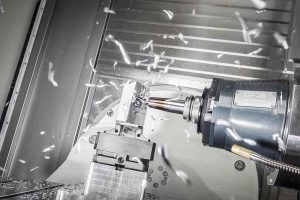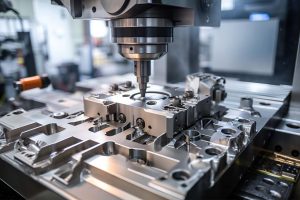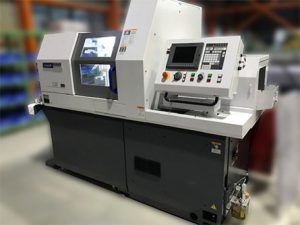CNC machines outperform lathes in precision, achieving tolerances as tight as 0.0005 inches, enable 24/7 automated operations, reduce material waste, and streamline complex designs with ease via advanced programming.
Precision and Accuracy
One of the most essential aspects for which CNC machines are notably better in the domain of manufacturing is their extraordinary precision and accuracy. While for instance, the precision of producing complex components that are used in the aerospace sector or for medical applications is not a critical issue, it is imperative for creating units such as jet engines. Because even a slight deviation from the created part that is created in serial production could lead to the failure of the latter, the equal fidelity of all components to one another is mandatory.
The creation of replacements for hip and knee implants and the need for their precise fitment inside the human body requires a machine capable of creating that level of precision. Similarly, the fact that CNC machines are more accurate also means that their outputs require less quality control applications, thus saving time on that aspect of the production process.
Another point of strength for CNC machines is that they also have a better track of precision when they are of the speed of production. This is especially critical because the faster the machine is, the less time it would take to create a product and deliver it to the market. For example, where it takes up to three hours for a traditional lathe to create a high precision 3D detailed model of a parts of a car, the analogous work for a CNC machine would only take a maximum of ten minutes. This aspect of speed is extremely important and reflective of overall superiority of CNC machines because the goal of any manufacturing facility is not merely to create a product but to do so in the shortest time so as not to accumulate unnecessary stocks in the warehouse.
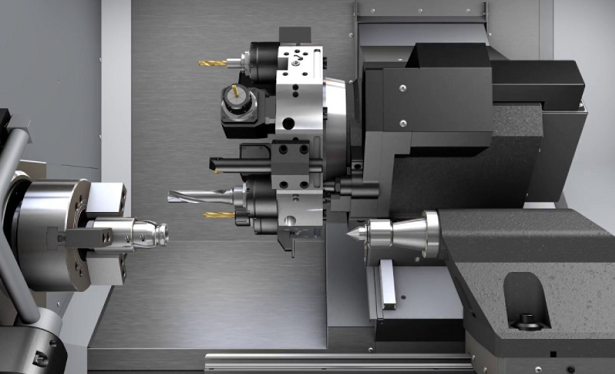
Complexity and Versatility
CNC machines have a serious advantage in dealing with designs that are too complex for traditional lathes, and, therefore, are irreplaceable – for example, in technology and automotive manufacturing. They use digital patterns of the given design, and are capable of working with them to perform complicated cutting from several axes simultaneously. A CNC router can make detailed 3D carving out of solid wood or metal – a task that can be accomplished only by setting up the data and manually polishing it for hours on a classical lathe.
As different industries require working with different materials to provide the end-user with the best product, CNC machines are used for a variety of materials, from soft plastics to strong metals, such as titanium or stainless steel. For example, consumer electronics manufacturers need to be able to work with all these types of materials, as electronic components require utilizing different resources to produce them. CNC machines understand the properties of these materials, and adjust their pressure and speed in order to cut them efficiently, and operators do not need to spend time adjusting them to their needs.
This technology is widely used nowadays, and examples of its utilization are not only hypothetical – for instance, producing smartphone casings, as shown in the video, may require complicated design and high quality of finish, as well as some other benefits of CNC technology. Additionally, these benefits lead to increased productivity: CNC machines can immediately switch between setups and tasks, and the retooling takes minimum time.
5 minutes should be enough for a CNC machine to switch between a task and a setup, while a manual lathe will require several hours to be retooled for another production line. Therefore, CNC machines are usually used in custom manufacturing, which does not allow to spend a lot of time on the retooling process and requires saving time for the client. Overall, utilizing CNC fabricated goods decreases the lead time from 25% to 50% in design-to-manufacturing industries, where time and cost finally define overall project progress and budget – for example, aerospace, and specialized machinery manufacturing.
Automation and Productivity
Industrial automation has impact the manufacturing of products though it has its advantages and disadvantages. One main advantage that has made CNC machine preferred by industries is the increased productivity. The fact that these machines can work continuously without any manual interference by the factory worker is an advantage to a large number of industries. This is an advantage to manufacturing plants that require high volume of production. In the making of engine parts for a car, for example, a CNC machine can run 24 hours a day to ensure that the factories assemble line does not lack for materials. In the end, the time lost when materials are delayed at the assembly line is saved.
Another advantage is the nature of automation used in the operations of a CNC machine. Different from a manual lathe operation, the final part made by a CNC machine will always the same irrespective of the workers level of experiences. The automation is beneficial in the manufacture of electronic components. The specification of the electronic components of a device must meet certain specifications for the device to function as a whole. The consistence of a CNC machine is a clear indication of the specification requirement being met in electronic manufacturing.
The machines can also be used to minimize on transit times by reducing the time take by each part through the machine. A good example is that by using a CNC machine to make a jet engine blade for an aircraft, the time it takes to make the jet engine blade is reduced by up to 30 %.
Another advantage is that the cost of labor in manufacturing industries is greatly reduced by the use of this machines. CNC machines only require only overseer and with this a factory worker can keep watch over a number of machines. This is advantageous to the manufacturing plants in advanced economies where the costs of labor are high.
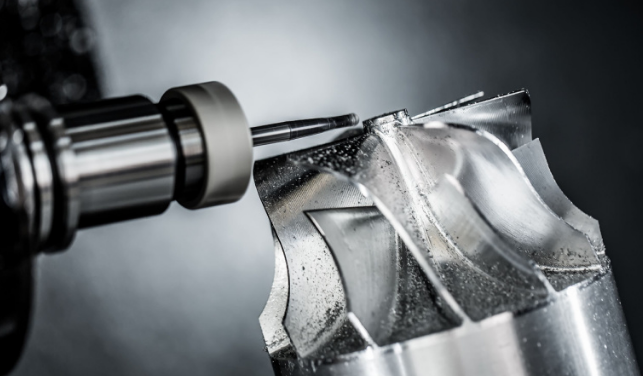
Reduced Human Error
One of the most important factors is that CNC machines significantly reduce human error. The principle of operation is based on the use of pre-programmed instructions and automated control systems. This ensures that the specifications of each produced part are entirely precise, provided that a small error in dimensions can have irreversible consequences in many manufacturing spheres. For example, in aerospace manufacturing, it is critical that the dimensions and tolerances of parts such as landing gear correspond to the design specifications exactly as any other reference can pose a threat to the safety of the planes. CNC machines ensure these exact specifications by eliminating the errors in manual measuring and cutting that might occur with a manual lathe.
Reducing the rate of errors in CNC machining does not only ensure the quality of the product, but it also increases the yield of the manufacturing process. In semiconductor production, CNC machines may be so precise that the final products have significantly reduced defect rates. The high rate of precision is actually a necessity here because as little as only one flaw in a semiconductor chip renders the entire final product unusable. In this case, the costs of the faulty product are doubled because not only have the materials been wasted in the process of production, but the money spent on machining the products was also spent in vain as the chips will not be used in production. The application of the CNC machines allowed to minimize the risks of these essential errors by hundreds of times compared to the manual lathe.
Apart from these reasons, CNC technology also facilitates the reduction of errors due to its capability of detailed pre-production testing. Thus, using CNC software, businesses can simulate the entire production process and spot the potential errors, i.e., the parts of the production process that will result in faulty products. In most cases, this way, the adjustments will be made to the schematic at the programming stage rather than the machining stage. Thus, manufacturers can be confident that a product is perfect in advance and be sure that an error caused by the human factor will not affect the process.
CNC machines are relatively low-cost and can work on producing parts 24/7 with minimal supervision. Many types of production could not possibly work around the clock with human operation for several reasons including but not limited to fatigue, distractions, or other human performance issues. For example, in the automotive industry, it is quite common that the production is non-stop. They can benefit greatly from CNC machines in the sense that while humans are unable to work the night shift endlessly, as they will not perform at the same high level as they would during the day time. However, a CNC machine can stay accurate and efficient during the night shift and can work endlessly without breaks.
Efficiency
Efficiency in the aspect of manufacturing refers to the ability of the technology used to do as much as possible in the shortest time to reduce the costs of the same. CNC machines have the efficiency of being able to perform a wide variety of processes without being stopped for a worker to clean parts. Since these machines can work in a streamlined position with no stopping apart from being turned on and off, time taken to manufacture specific parts is reduced dramatically.
Construction of car’s engine blocks would require drilling, tapping, and milling procedures. Lathes may move to different setups every now and then to accomplish this task. With CNC machines,this task may be routinely completed in a single setup. Coupled with the efficiency of time, CNC machines are energy and resource effective. The path is divided into multiple sub paths of single processes that sees materials being well used without wastage. This is facilitated by setting the appropriate speed that a CNC machine can run. Time is also not lost in reinstalling the machine should the path of materials require it to move in the opposite direction.
The stage of transition makes them valuable in the establishment of replacement-up patients’ body parts. For instance, titanium joints are difficult to machine while at the same time the raw material is very expensive. An orthopedic joint manipulation requires that the amount of scrap be reduced as much as possible. However, CNC machines manage to do this effectively. In the time spent in manufacturing applications such as shipbuilding, where large components are made in large quantities, CNC implants are equally effective.
The job is a brush enough. Individual requirements are related to nozzle requirements watering systems that are steadily and steadily manufactured in very little time. The time that would have been squandered in the measuring and the measurement of the application in the two watering devices is therefore effectively utilized in the use of CNC machines. Additional time is also saved in trying to get the players to rest and then reschedule for the running process.
The precise time spent for the procedure of both machines is carried out in a single go. This time would have otherwise been divided in an estimated time further raising the costs of the application and forcing the two to spend more time carrying out repairs. This raises the application costs even further. In electronic devices applications, where time spent per board is very close to zero, CNC implants are used effectively. In these applications, the digital devices are precisely measured and the entire board built over the specified time. This is as opposed from the manual versions that spend a lot of time trying to get back the parts to be used for repair.
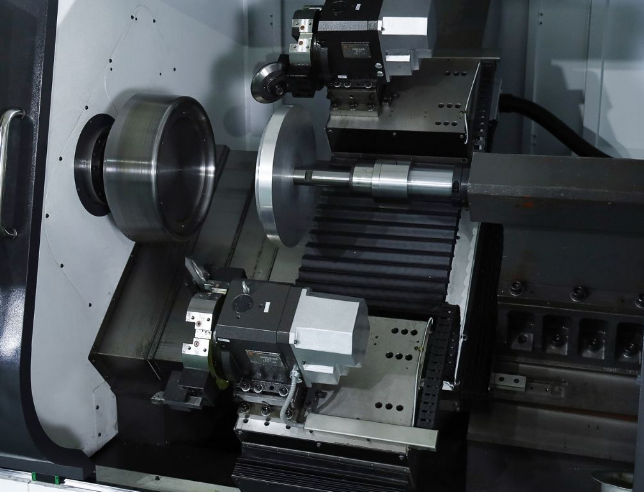
Ease of Programming
CNC machines are quite technologically simple in terms of programing, which allows quick setup and adaptability to different tasks. Unlike traditional lathes, which require manual setup and operation, CNC machines use a highly complicated software program. Nevertheless, the software is designed in such a way that the machines follow the exact design and thus do not require sophisticated skill to operate. CNC machine is easily programmable, and the setup can be easily changed to a new design at any time.
This is particularly beneficial in the context of automotive machinery production, for example, where a particular part is designed for a specific model of a car. In this context the materials of the part may vary depending on the specifications of the applying car model; additionally, the engineering requirements for different car models also differ. Specifically, CNC programming can be changed swiftly to accommodate new production needs, therefore providing high adaptability of operations.
Another benefit of CNC programming is ease of user interface, which is quite new. This implies that this software is user-friendly and allows easy manual programming. Specifically, available graphical interfaces facilitate the task of planning the operation. This is crucial for certain types of businesses such as furniture production, where the specific design of new furniture cannot be uploaded into the existing programming system and must be manually created. In this context, employee training is required; therefore the easier the interface, the more beneficial it is for the company.
Importantly, with the use of CNC programming, operators can check up on machinery setup by using a simulation mode that allows to see the actual machining. This allows to make final adjustments and to identify possible mistakes in operation before the actual cutting begins. Overall, the fast speed of setup and adaptability of CNC machines are important characteristics that can be beneficial for many industries. Additionally, CNC programming allows storing multiple profiles within the operation program which allows to easily switch from one operation to another. For example, in an electronics mill, CNC machinery can switch from milling one type of circuit board to milling another type of circuit board within seconds, which means that this equipment does not stand idly.
Cost-Effectiveness Over Time
One of the most important advantages of using CNC machines is the cost-effectiveness that increases over time. Although the first investment in the CNC technology can be higher than in case of traditional lathes, the savings that a company can receive at the operational level outweigh these initial expenses. For example, if a car manufacturer uses CNC machine for the production of automotive parts, the number of defective parts will be lower, while the number of produced units per hour will exceed that produced using traditional lathes.
Therefore, the cost of one unit produced using CNC machine will be much less than that produced using traditional equipment because the price of a unit should include the costs of gas and labor, while metal is an additional cost. If a company makes ball joints for SUVs every day, and each joint costs $10, it is obvious that the number of $10 parts matters less than $20, $30, or even $50. However, the other important criterion of saving concerns the number of hours needed for the production because if one unit is produced 50% slower than the other one, its cost will be double. Therefore, the higher number of units produced is unlikely to affect the consequences of mess-ups, waste, and wear that cost hundreds of thousands of dollars.
Another factor that should be mentioned is the low cost of CNC machines and a small number of people needed to work with them. Although the expense of one’s labor is not the main cost for a company, if one can do twice as much work for one’s potential earnings, it may be the main reason why a company opens or expands a business. For example, the costs of hiring ten best workers in the auto-body business to make custom jewelry are prohibitive because of the large amount of wasted materials that only the most experienced workers can make. The difference between $6,000 and $15,000 wages of the workers is insignificant in terms of the metal prices. The other important factor is the relatively small cost of maintenance. A CNC machine is more automized, durable, more productive, requires less downtime, and less maintenance than two machines for traditional lathes.


